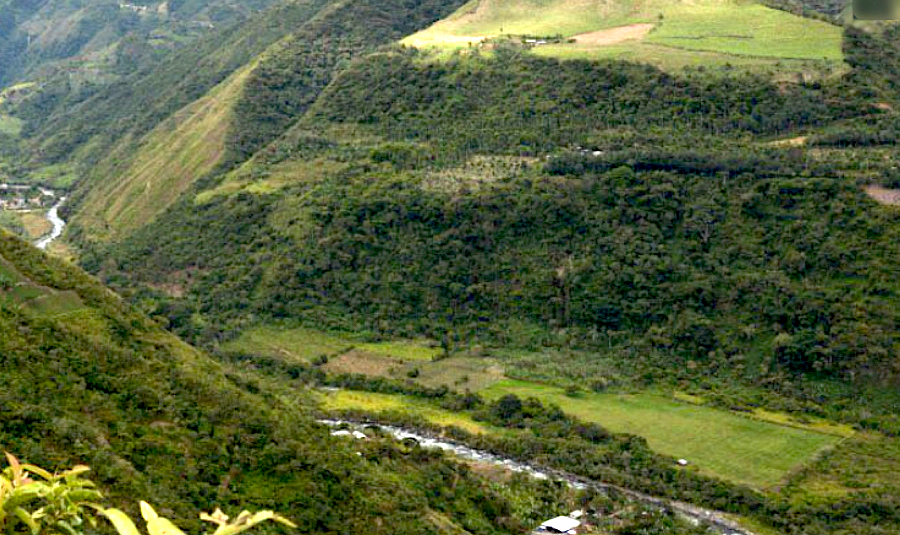Renewables would boost First Nations’ support for mining in Ontario: poll
A new poll among Northern Ontario First Nation community residents exploring their attitudes towards renewable energy and resource develop shows a high level of support for provincial government renewable energy and conservation initiatives.
The results, presented Thursday by Oraclepoll Research President Paul Seccaspina at the Renewables & Mining Summit and Exhibition, shows the communities are specially favourable to solar power, with more than 8 in 10 supporting the technology.
While 57% of the participants in the Northern Ontario First Nation Residents’ Perceptions on Energy and Mining supported government initiatives that promote renewable energy policies, a conclusive 71% believe the provincial government is not doing enough to promote renewable energy in First Nation communities.
Only 25% of respondents viewed natural gas favourably. Nuclear was even less popular, with only 20% of support, which made it the technology least preferred by this group.
Hydroelectricity and wind both were positioned mid-pack and are seen as favourable by half of the respondents.
Don Huff, President of Environmental Communication Options, who has worked closely with Oraclepoll for nearly twenty years, says the poll confirms that First Nation community residents have strong opinions on what was unacceptable to them.
“Not surprisingly, scenarios involving obvious community-focused benefits had the lowest levels of opposition. A notable result was the highest level of support for a new mine was attracted by the concept of using renewable energy at the mine,” Huff said.
The research was conducted between September 26 and October 2, 2014 utilizing live person-to-person telephone calling to a random selected audience of First Nation community residents.
From the 200 respondents, only 8% lived in communities not connected to the Ontario electricity grid and rely on diesel generation for electricity.
The poll was commissioned by Environmental Communication Options, a firm actively engaged in a range of renewable, resource-focused and First Nation matters.
{{ commodity.name }}
{{ post.title }}
{{ post.date }}




6 Comments
drifter
They want renewable resource? Dust off the traps and get an axe and away you go. I’ve had enough of your continuing request for freebies.
onemansopinion
Renewables make sense in small communities off the grid.
Larry Southwick
Silver pinwheels and green fertilizer
Ah, a new icon for First Nation peoples: not a teepee, not a totem pole, but a
WIND TURBINE. Perhaps it will serve as a 21st Century Dream Catcher. Not for just a few vilages, but for several thousand square miles.
These silver pinwheels will now alert one and all of Ontario’s First Nations’ environmental sensitivity and their preferred image of the mining industry’s social license to operate. Their unending whoosh, whoosh, whoosh a reminder of the
sound of eagle’s wings, or a spirit communing with Mother Earth, or maybe a
nervous headache coming on. Such as from watching an eagle fly afoul of one of these “gentle giants”, as they do in the US West. Then the sound is “splat, splat, splat” – three blades, three hits.
I thought hopefully that First Nation people would not fall for what Major Clipton said at the end of the movie, “Bridge over the River Kwai” as he watched the bridge collapse: “madness, madness”. I must have expected too much.
Another sacrifice to PSEUDO SCIENCE, a jarring image to replace splendid sunsets, sounds of nature and beautiful vistas. What oh what will all the green things do to live large(r) as green things without the carbon dioxide man generates?
Larry M. Southwick
klgmac
Solar in the Arctic? Hahahahaha. Good luck with that.
SwissChard
Could it just be that the Northern Ontario First Nation community has a tradition that recognises the need for humans to respect the limitations of natural eco-system and causes them to be critical of visions of growth that are clearly unsustainable?
Larry Southwick
A responsible society
It’s not that I am saying I disrespect the traditions of the First Nations peoples. I was first acquainted with those traditions 60 years ago, and continue to read about them, visit their communities, and purchase their traditional hand made goods. The more traditional the better.
What I am saying is that if the Ontario group choose to make the demands this article describes, then they are making four big mistakes. First, as I touched on earlier, these renewable energy systems have a considerable visual impact and are harmful (the silver pinwheels) to wildlife. Secondly, the systems are often not overly reliable and keeping them in a high performance condition can be expensive.
Thirdly, they cannot generally be used the whole year, through the snow, the rain, the dark of night. Unit size can be small and transmission provisions expensive.
The last is the people are hindering development of that resource, which has a social impact on them and everyone else in not providing the materials from which to make the goods and services all of us depend on.
And while they may be many in the First Nation community happy with a less modern life, you can rest assured that a substantial proportion of the young people are not.
How to you keep the young people “down on the farm”? You provide them education, training and jobs. These peoples are already in the 20th century, and many may not want to move just yet into the 21st century. How then do you address the needs and wishes of those who do, minority or majority?
Do they want the state of the art health care facilities other areas have come to
expect and to benefit from? Do they want the year-round supplies of fresh off the vine fruits and vegetables? Do they want relatively cheap energy and more extensive transportation infrastructure?
Do they want the ability of make the money to send their children to places of higher learning, and by so doing retaining the traditions of being self-sufficient? The ills of our industrialized society are already upon them, and being poor does not help very much to change that. Expensive, intrusive and periodic energy supplies won’t either.
The natural resources industry has applied many successful methods to help local communities to benefit from development and to keep the operations on as low a profile as possible. They are not fault free, little in human endeavor is, but
they are not ogres either.
Does the reader of these internet pages wish to have their access curtailed, made more expensive, and unable to keep up to date when the natural resources required to supply them become more scarce and more expensive?
If so, then keep going with the one sided belief that handcuffed developers with adverse financial balance sheets are required. Then for sure the Ring of Fire
resources will stay in the ground, and we can all commit to moving another step
down the life style ladder.
Surely, we all know that the ROF is not “the end all to be all” answer to supply and demand issues, but they are part of that answer if you don’t live in China.
Larry